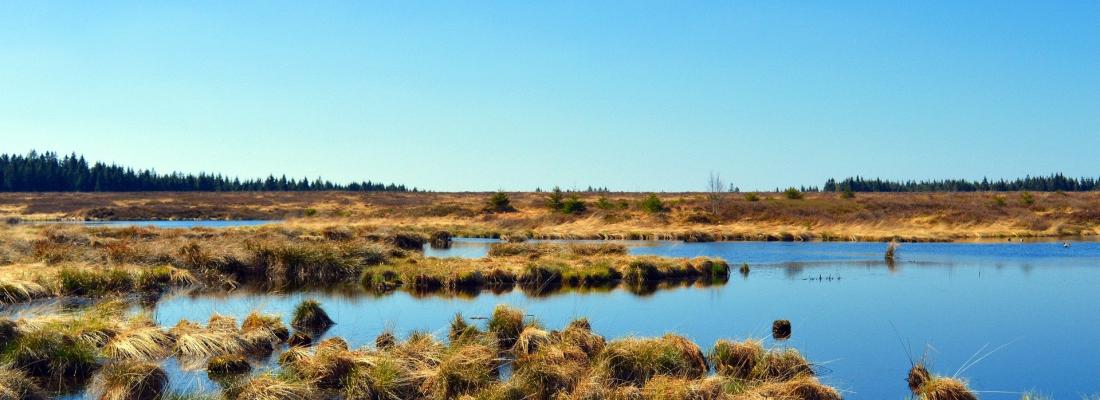Climate change and risks Reading time 2 min
Peatlands drained for agriculture: estimating carbon emissions over the last millennium
Published on 07 June 2021

Peatlands are the land ecosystems that store the most carbon worldwide. Organic plant material only partially decomposes in their waterlogged soil, resulting in carbon accumulation over the long-term. In that way, natural peatlands influence the climate by taking carbon dioxide from the atmosphere through photosynthesis and trapping organic CO2 in the soil, thereby accounting for one-third of the world's soil carbon stock, which, in turn, limits the greenhouse effect and atmospheric warming. However, artificial peatland drainage - for agriculture, tree farming or to reclaim land - aerates the soil and increases organic matter decomposition and consequently, atmospheric carbon emissions.
Peatlands have been a missing, yet major, component of knowledge about the carbon cycle. Up to now, in fact, only very limited data have been available for characterising the amount of carbon that was emitted when peatlands were drained to convert them into farmland during the historical expansion of agriculture.
A model to simulate carbon emissions from peatlands
The research team developed a soil simulation model that includes the hydrological processes involved in peatlands as well as those connected to carbon storage in this organic-matter-rich soil. It is one of the first models to simulate the functioning of peatlands, their conversion to agricultural land, and the carbon emissions induced by that conversion. These scientists used it to estimate carbon emissions over time from agricultural lands since the time the peatlands were first drained. While high levels of carbon emissions can occur during the first few years after draining, they decrease over time, going from an emission rate of about 20 tonnes of carbon per hectare per year during the first seven (7) years to five (5) tonnes of carbon per hectare per year after about 25 years. This decrease can be explained by the decline in available organic matter stored in the soil.
The peatlands converted into farmland in the Northern Hemisphere emitted 72 billion tonnes of carbon from 850 to 2010 A.D.
The study showed that peatlands converted into farmland in the Northern Hemisphere emitted 72 billion tonnes of carbon from 850 to 2010 A.D., including 40 billion from 1750 to 2010 A.D. And that only half of those emissions were compensated for by carbon uptake in natural peatlands. This calls into question previous estimates of historical carbon emissions due to changes in land use throughout the world that did not take into account such data. Carbon emissions from peatland drainage are a cause of concern for various countries' carbon budgets1 as well as for future trends in greenhouse gas emissions. This study provides new data to better assess the carbon budget available today across the world and, in that way, reduce uncertainties in global climate models.
1 A carbon budget sets out the maximum ceiling of CO2 emissions that would make it possible to remain below a given average global temperature.
|
Reference C Qiu, P. Ciais, D. Zhu, B. Guenet, S. Peng, A. M. R. Petrescu, R. Lauerwald, D. Makowski, A. V. Gallego-Sala, D. J. Charman, S. C. Brewer. Large historical carbon emissions from cultivated northern peatlands. Science Advances 04 Jun 2021: Vol. 7, no. 23, eabf1332 - DOI: 10.1126/sciadv.abf1332 |
* Research laboratories involved in the study:
- Laboratoire des sciences du climat et de l’environnement (CNRS/CEA/UVSQ - environmental and climate sciences laboratory),
- Applied mathematics and computing - Paris (AgroParisTech/INRAE/University of Paris-Saclay),
- ENS (Ecole normale supérieure) geology laboratory (CNRS/ENS Paris/University of Paris-Saclay),
- ECOSYS (Agroparistech/INRAE/University of Paris - Saclay).
